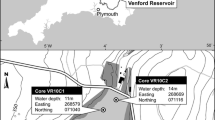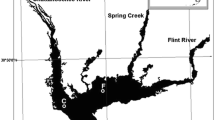Abstract
Water reservoirs, lakes, and larger basins, including their drainage areas, represent sedimentologically closed to semi-closed denudation-accumulation systems. The mean rates of mechanical denudation, DRme, and clastic sedimentation, SRme, are related by the ratio of the drainage/lake area, Ad/Al. If the latter is known, DRme (or the specific sediment yield SY in t per km2/a) can be calculated from SRme, or vice versa. The best data for modern SY mainly come from the sediment fills of artificial reservoirs. Small drainage areas of mountainous regions show SY values up to two orders of magnitude higher than lowlands and approximately one order higher than larger regions of mixed relief. This is also true of arid to semi-arid zones which often provide approximately as much sediment (SY) as humid temperate and even tropical zones of comparable relief. Lithology and climate (river runoff) also may play some role for SY from catchments of limited size. The importance of these factors is exemplified by perialpine lakes and two East African lakes. Sediment yields gained from some large reservoirs compare well with long-term denudation rates derived from geological studies (e.g., the Tarbela dam reservoir along the Indus River). In many other cases, human activities have raised SY by factors of 2–10, locally up to >100. Artificial reservoirs in mountainous regions with SY in the range of 300–2000 t per km2/a tend to become filled within several tens to hundreds of years; some have even shorter lifetimes. Perialpine lakes of the Alps and British Columbia are strongly affected by delta prograding and have lifetimes mostly between 15 and 40 ka. Closed lake systems in deep morphological depressions (Lake Bonneville, Aral Sea, northern Caspian Sea) have a high potential for sediment storage up to the level of spillover and therefore can persist over long time periods. Basins with markedly subsiding basin floors (lakes of the East African rift zone, the southern Caspian Sea, and the Black Sea, both on oceanic crust) can survive for many Ma in the future, despite relatively high terrigenous input.
Similar content being viewed by others
Author information
Authors and Affiliations
Additional information
Received: 30 July 1996/Accepted: 10 January 1997
Rights and permissions
About this article
Cite this article
Einsele, G., Hinderer, M. Terrestrial sediment yield and the lifetimes of reservoirs, lakes, and larger basins. Geol Rundsch 86, 288–310 (1997). https://doi.org/10.1007/s005310050141
Issue Date:
DOI: https://doi.org/10.1007/s005310050141




